#April 11 1945
Explore tagged Tumblr posts
Text
The Oath of Buchenwald

photo from wikipedia
Beginning in the morning of April 11, 1945, armoured divisions of the Third U.S. Army advanced towards the east from the area near Gotha. At 10:00 am, all SS men were ordered to leave the camp. The International Camp Committee mobilized its resistance fighters and began to distribute hidden weapons. Around noon, the commanding SS officers fled. The guards abandoned the watchtowers. Around 2:30 pm the tanks of the Fourth Armoured Division rolled through the SS complex without stopping. The SS fled. Armed inmates took control of the camp and overpowered the last remaining SS soldiers. By 4:00 pm they had taken control of the camp. Buchenwald was freed from within and without. About one hour later, scouts from the Fourth and Sixth Armoured Divisions were the first American soldiers to reach the camp. 21,000 inmates were liberated on that day, among them some 900 children and youth.
Since the camp was founded in July 1937, more than a quarter of a million people from over 50 countries had been deported to Buchenwald concentration camp or one of its satellite camps: 249,570 men and boys and 28,230 women and girls aged between two and 86. Around 56,000 of them did not survive the deportation to Buchenwald concentration camp.
Source:
0 notes
Text

A German nurse assists an 8th Armored Division medic, treating a wounded young German soldier captured during the battle for Unna, Germany. 11 April, 1945
65 notes
·
View notes
Text

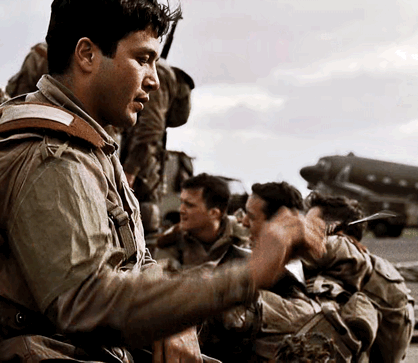
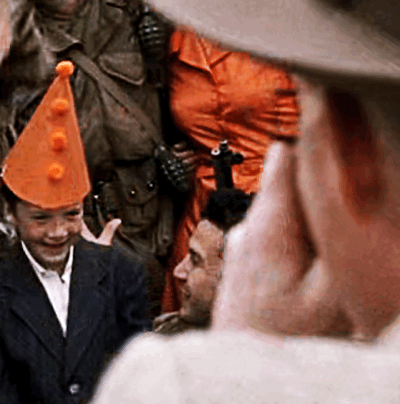
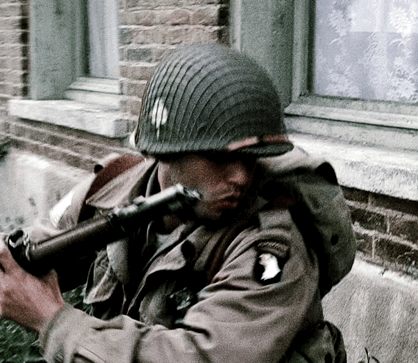
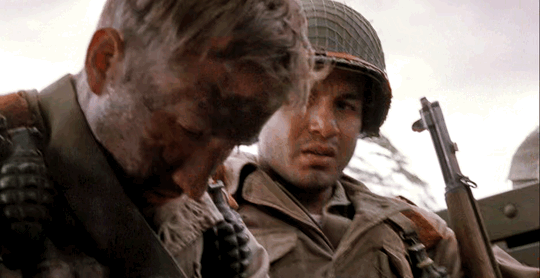
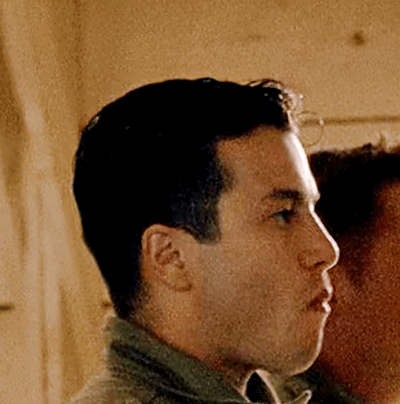
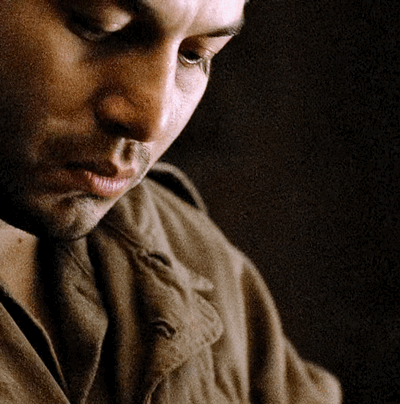

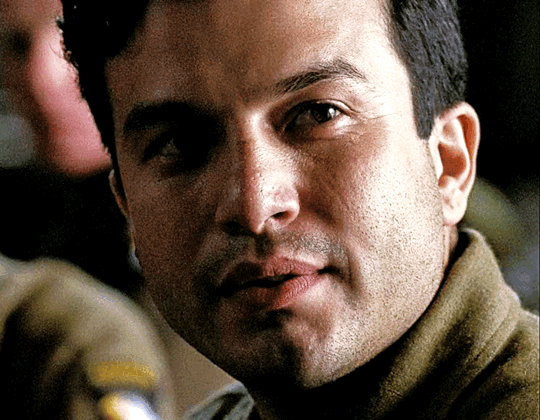
HISPANIC HERITAGE MONTH + BAND OF BROTHERS:
JOSEPH "JOE" RAMIREZ
Born October 5th, 1921, in Nebraska
Died April 8th, 1988 (age 66), in Martinez, California
Joe Ramirez enlisted in September 1942 (age 20) in San Francisco, CA, and he trained with Easy Company at Toccoa. Holding the rank of Private, he served in Normandy, Holland, and Bastogne. He was hospitalized in January 1945, and discharged in July 1945. After the war, he was married for many years, and had children and grandchildren. When he passed away he was buried with his wife, who had passed away 11 years earlier. Further information about him is scarce, but the brief character profile in the Band of Brothers series bible describes him as Mexican-American, and his personality as "sensitive and nervous."
Appears in Episodes 1, 3-8, and 10; portrayed by actor Rene L. Moreno
Sources below
A million thanks to @bleedingcoffee42 for tracking down this info for me!


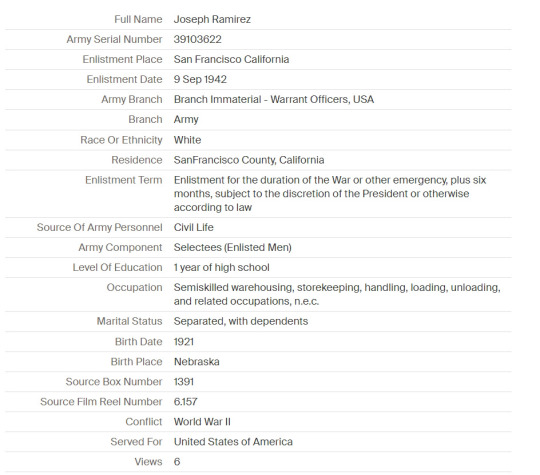
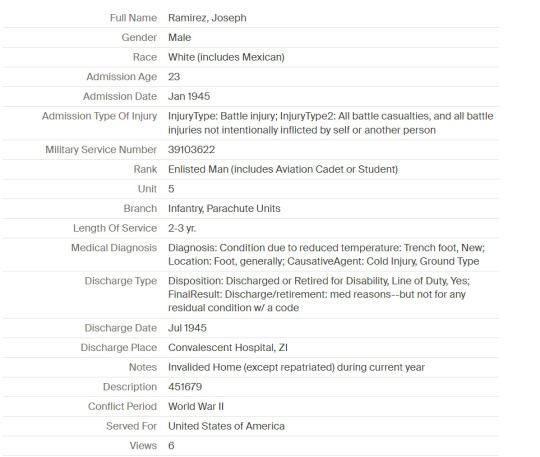
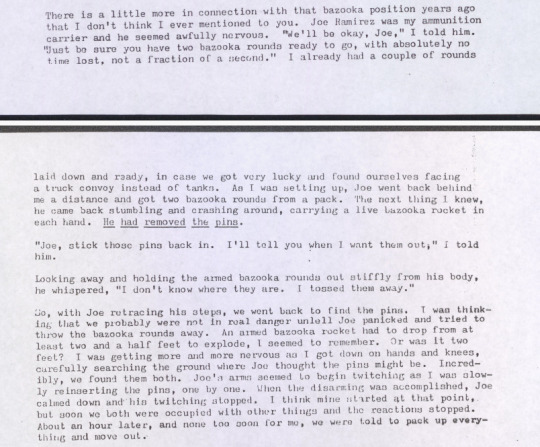
#joe ramirez#joseph ramirez#band of brothers#rene l. moreno#mine: gifs#hispanic heritage month#latino heritage month#sources vary on whether he was a Private or PFC#they seem to have taken A LOT of creative liberties on the show bc#the only 2 anecdotes about him in BoB seem pretty diff from his character on-screen#not to mention that he would've been in the hospital during events of episodes 8 and 10 (each of which he's in several scenes)#on the other hand i do really like his character in the show and think he's one of the best and most underrated background characters#and why yes i am completely normal about him 😅#but also i'm sure he would've been great too if they'd made him more accurate to what limited info exists about the IRL guy#I forgot to save a few of the documents that bleedingcoffee42 sent me unfortunately but these are most of them!#but from one of them (his draft card?) i discovered he lived like 1.5 miles from my grandparents!!#(tho of course they moved there in the 50s so who knows if he was still living at same address by then... but still!)#oops i originally had the episodes he's in listed wrong on this#so AFAIK he's only NOT in eps 2 and 9#in ep 1 he's twirling a knife at the beginning and eating spaghetti next to Guarnere and Malarkey and playing basketball in England#in ep 6 he's eating the bean soup near the line when Sink arrives#in 7 he's sitting next to popeye and then in the church at the end (maybe in Foy but i'm not positive)#in ep 3 i thiiiink he's in Carentan next to Buck? and he's at the party in England sitting next to Lipton and listening to Gordon#in 4 he's in too many scenes to list here#in 8 he's in too many to list#in 10 he's hunting for food with the group and standing next to Grant's shooter when Speirs comes in the room
111 notes
·
View notes
Text

80 years ago today, April 11, 1945, the Buchenwald concentration camp was liberated by American forces. Pictured are survivors from Buchenwald at the Haifa Port on the way to the Atlit Detention Camp (July, 1945). The little boy holding the flag is Rabbi Israel Meir Lau, former Chief Rabbi of Israel. At 8 years old, Lau was one of the youngest survivors of Buchenwald. His brother Naphtali (on the left) looked after him throughout the war and together they made it to Israel.
Contributor: Jill Goltzer
31 notes
·
View notes
Text

Robert Clary was the youngest of 14 children. In 1942, because he was Jewish, he was deported to the Nazi concentration camp, Ottmuth. He was later sent to Buchenwald where he was liberated on 11 April 1945. Twelve other members of his immediate family were sent to Auschwitz. Clary was the only survivor. When he returned to Paris after the war, he learned that 3 of his siblings had not been taken away & survived the Nazi occupation of France. He played LeBeau on the t.v. show “Hogan’s Heroes.”
All of the German officers on Hogan’s Heroes were actually played by Jews
40 notes
·
View notes
Text

Community Trash #11 (Debutante)
2025
Mixed media art waste (paint, ribbon, plastic, jewelry, paper) on plywood
The Community Trash series is made from unwanted materials from friends, family, and community members: offcuts and scraps, contaminated paint, canvases lumpy with failed attempts, boxes laden with the dust and guilt of abandoned hobbies. Repurposing this creative trash reduces both my effect on the climate and the clutter in my friends' homes. I took inspiration from Constance Bigelow’s “1945 Debutante”, choosing trash that mirrors Miss Cowgill’s elegant dress. Unlike the traditional materials and apparent purity of Bigelow’s portrait, my piece is made with objects that have been cast aside – the most impure thing of all, trash.

See this work in person at ArtsWorcester's show "Monochrome" from March 6 - April 13, 2025.
#my art#trash paintings#white#abstract painting#abstract art#artists on tumblr#sustainability#constance bigelow#monochrome#coquette#I guess?#lmao.
52 notes
·
View notes
Text
How long was Ultimis' journey?

Just trying to figure out how long Ultimis' journey from WAW to BO4 was in real time. Could be way off, time travel makes this so confusing lol.
1 week - Ultimis forms on October 14th 1945 in Der Riese and travels to Shi No Numa, a swamp in Japan, arriving on October 21st 1945.
1 week - Ultimis travel from Shi No Numa back to Der Riese, arriving on 28th October 1945.
A few hours to a few days - Der Riese to Kino. This is speculation, but given Ultimis didn't have to travel anywhere on foot, I'm gonna put the time as a bit less.
13 months - Kino to Ascension, date ranges from October 1962 in Kino to November 6th 1963 in Ascension. Unless Ultimis time travelled again, which is possible, a whopping 13 months passed between these events. Ultimis locate a lunar landing which transports them to the Russian facility in Ascension. It's implied that Richtofen may have separated from the group for a while, as he's wearing a space suit. He was probably planning on attempting to overthrow Samantha before realising he needs more components. At Ascension, Ultimis free Gersch from the casmir mechanism, but then are shot through the Gersch device, causing them to teleport/time travel again to 1996, Siberia.
A few hours - Call of the Dead to Shangri La, the crew are stuck in a dark closet for what is at most a few hours. The team of celebrities collect the vril device for Richtofen and Ultimis teleports away to Paradise.
A few hours to a few days - Shangri La to Classified, Ultimis arrive at shangri la on April 25th 1956 and Richtofen collects the focusing stone, Dempsey fires a wonder weapon inside a teleporter causing the group to travel to the pentagon in classified, date, early November 1963.
A few hours to a week - Moon, Ultimis arrive at Groom Lake on October 13th 2025 and teleport to the moon. Richtofen succeeds in swapping bodies and takes over the MPD, only stopped from holding more power by the rest of Ultimis and Samantha aiding Maxis to blow up the Earth, weakening Richtofen's connection to the Aether. Ultimis and Samantha manage to teleport back to Groom Lake, arriving in early november 1963 rather than 2025.
A few months - Imprisoned in Hanger 4. Ultimis are held hostage by American forces and experimented on for the duration of a few months before Primis frees them and they travel to Camp Edward/Alpha Omega. Ultimis Dempsey states on Alpha Omega they were imprisoned and experimented on for the duration of a few months.
A few days to a week - Alpha Omega to Tag Der Toten. Ultimis and Primis arrive at Alpha Omega on October 13th 2025. They successfully retrieve the agarthan shard before spending one final night around a campfire as seen in Tag der toten.
A few hours - Tag Der Toten. With the rest of Ultimis and Primis poisoned by Primis Nikolai, Ultimis Richtofen, now reverting to his undead form, instructs Samuel and the rest of Victis on his final journey at the Siberian facility on January 1st 1964.
Total time Ultimis spent on their journey - Highly speculative, but I'm gonna say around 18 months. Though, if Ultimis did time travel between Kino and Ascension, the total time could be as short as 5 to 6 months.
For Richtofen, you can add about 10.5 to 11 years, given the 10 year time jump from Moon to Tranzit and then the time jump from Buried to the end of the zombie comics. So the total time of his journey would be around 11 to 12 years, depending on if Ultimis time travelled between the events of Kino and Ascension.
#codz#cod zombies#ultimis#ultimis nikolai#ultimis takeo#ultimis richtofen#ultimis dempsey#tank dempsey#richtofen#edward richtofen#takeo masaki#nikolai belinski#call of duty zombies#could be wayyy off here lol#my post
107 notes
·
View notes
Text
I just realized something about some of the Hazbin characters…
Ok so real quick let’s make a list of when some of the cast died and roughly how old they were at their time of death
Alastor: 1933, 30s-40s
Husk: 1970s 60s-70s
Angel Dust: 1947, 30s
Niffty: 1950s, 22
Ok cool, let’s just fill in some blanks to get a rough idea of when everyone lived and died and what age they were at their times of death. (These are my headcanons, not official, use your own numbers if you want, it doesn’t change anything super drastically and you’ll see why)
Alastor:
Born: 1900
Died: 1933
Age: 33
Husk:
Born: 1900
Died: 1975
Age: 75
Angel Dust:
Born: 1909
Died: 1947
Age: 38
Niffty:
Born: 1933
Died: 1955
Age: 22
Ok we now have our dates. Cool.
Let’s do a quick history lesson and see what events were going on around these time periods.
WW1: July 28, 1914 – November 11, 1918
Prohibition: January 17, 1920 – December 5, 1933
The Great Depression: 1929–1941
WW2: September 1, 1939 – September 2, 1945
Cold War: March 12, 1947 – December 25, 1991
Civil Rights Movement: 1954-1968
Vietnam war: November 1, 1955 – April 30, 1975
…..do you see what I’m seeing???
They lived through some heavy shit
Husk in particular lived through damn near all these events, the only one he didn’t see all the way through was the Cold War. Genuinely amazed he’s not constantly shit faced from trying to forget some of these historical events cuz a lot of them weren’t a great time to be alive in.
No wonder they’re all so fucked up!
#Hazbin Hotel#hazbin hotel headcanon#Alastor#alastor the radio demon#hazbin hotel alastor#Husk#Husker#hazbin hotel husk#Angel Dust#hazbin hotel angel dust#Niffty#hazbin hotel niffty
121 notes
·
View notes
Text
Look maybe the fandom has talked about this before but I was a literal child when the fandom was born so I'm gonna talk about it now. Childhood is temporary but fandom is forever (no it's not)
Peggy Carter's birthday on the MCU wiki is listed as April 8, 1921. Based on some speculative timelines, we can determine that the events of Captain America: The First Avenger span from approximately June 1943 to March 1945, so Peggy would have been between the ages of 22 years 2 months and 23 years 11 months.
Agent Carter season 1 takes place in April/May 1946, which we know because the season finale happens on the first anniversary of V-E Day on May 8. It's not entirely clear how many days pass over the course of the season (unless it is and I'm just not dedicated enough), but given that episodes 5-8 seem to happen over the course of about 50 hours, it seems safe to say it's about a week to ten days. This means Peggy is 25 years 1 month old at the end of the season.
However, in S01E01 "The Iron Ceiling" Daniel looks at Peggy's file to cross-reference an injury she received with the ones in the photos of the blonde at the club, who is of course Peggy in disguise. The incident report shows her age at the time of the injury as 26 years 11 months old.
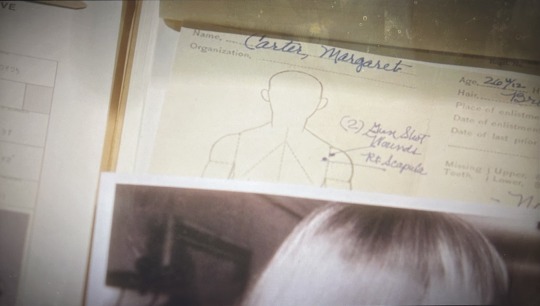
(ignore the fact that I took a picture of my laptop with my phone, the top right corner has her age)
These means one of a few things is possible. The first is that the show got her age wrong on accident, either because they didn't know her birthday or they didn't scrutinize the timeline like a fandom does, which is very likely but boring. Second is that it's possible her birthday was made canon after the show, which is also possible and boring. Another possibility is that the MCU wiki has her birthdate wrong, stating that she is younger than canon says she is, which seems unlikely to me and is also a boring explanation.
The most fun and most headcanon-y explanation is that she really was born in 1921 but she, for whatever reason, lied about her age and said she was born in 1918, making her 28 years 1 month old at the time of the first season.
1918 seems the most logical year because the show implies Daniel doesn't know about the injury, but it is established that the two have known each other for six months. If she was 27 at the time of the show the injury would be two months old and Daniel would likely know about it. Additionally, the wound appears as healed scars, meaning it has been healed for some time, likely longer than two months.
Assuming she only lied about her birth year and not the actual day, a birth year of 1918 places the injury in March 1945, which makes logical sense with the timeline of CA:TFA, placing the event in the approximately two weeks between Cap going in the ice and her birthday.
1918 also makes sense because, assuming she got involved with S.O.E. in 1940 like the show depicts, she would have been about 19 pretending to be 22. If she had lied and said she was much older, it seems likely she would have been caught in the lie. Additionally, Steve was born in 1918, Bucky and Howard in 1917, and Daniel and Jack sometime in 1918 or 1919 (the wiki is vague for both of them), so her supposed age would be consistent with the ages of the people she worked with.
I personally headcanon that she was born in 1921 and lied that she was born in 1918. I also headcanon that Michael was born in 1918 and they used the same year as if they were twins, which has far less basis in canon and is more of a little treat for me.
If anyone has insight/proof of some other alternative/theories/headcanons, let me know because I would love to hear!
#thank you for coming to my tedtalk#im just a silly girl obsessed with her silly show#agent carter#peggy carter
20 notes
·
View notes
Text
I saw another of these floating around that was...wrong, so I'm putting this together so people can keep characters' ages straight more easily. I'm not listing everyone, obviously, but characters whose ages get misstated most often.
Does this match up with the wiki or the Ultimanias? Absolutely not! The Ultimania says that Lucrecia was pregnant for three years! The wiki says that Vincent was shot after Sephiroth was born, even though Lucrecia was still pregnant when it happened! The source material, however, is 99.99% internally consistent with regard to the timeline, so I go with that, and that's what we're going by here.
Jenova Project S (1977 · [ μ ] – εγλ 1977)
Vincent: 26-27 (October 13, 1950)
Lucrecia: 27-28 (July 22, presumed 1949 or 1950)
Hojo: 32 (born 1945)
Pre-Crisis Core (2000 · [ μ ] – εγλ 2000)
Genesis: 23 (born early 1977, see first link below)
Sephiroth: 22-23 (born in late 1977, probably Christmas)
Angeal: 21-22 (born late 1977/early 1978, see first link above)
Zack: 16 (born in 1984)
Cloud: 14 (August 11, 1986)
Aerith: 15 (February 2, 1985)
Nibelheim Incident (October 2002 · [ ν ] – εγλ 0002)
Genesis: 25
Sephiroth: 24-25
Angeal: 23-24
Zack: 18
Cloud: 16
Aerith: 17
The Crisis (December 2007 · [ ν ] – εγλ 0007)
Genesis: 30-31
Sephiroth: 30 (physically ~25)
Angeal: 29-30
Zack: 23
Cloud: 21
Aerith: 22
Vincent: 57 (physically 27)
Lucrecia: 57-58 (physically ~34)
Hojo: 62
Advent Children (2009 · [ ν ] – εγλ 0009)
Genesis: 32-33 (physically ~30)
Sephiroth: 32 (physically ~25)
Cloud: 23
Vincent: 59 (physically 27)
Dirge of Cerberus (2010 · [ ν ] – εγλ 0010)
Genesis: 33-34 (physically ~30)
Cloud: 24
Vincent: 60 (physically 27)
Lucrecia: 60-61 (physically 34)
Hojo: 65 (physically nonexistent)
Edited April 2024, when Hojo's age was canonized by the Rebirth Ultimania.
#fandom ramble#FF7#final fantasy 7#FF7R#final fantasy 7 remake#final fantasy 7 rebirth#crisis core#crisis core reunion#CCFF7R#dirge of cerberus#vincent valentine#genesis rhapsodos#sephiroth#cloud strife#angeal hewley#lucrecia crescent#professor hojo#ff7 timeline stuff#someday I'll make a proper timeline of events with citations FROM THE SOURCE MATERIAL#instead of the contradictory meta#which say that Sephiroth was born in both 1980 and 1977#and that Gast was killed in 1977 or 1982#even though Aerith was born in 1985 and IS HIS KID#it's ridiculous#just do math#just#just do the math#oh my god
377 notes
·
View notes
Text

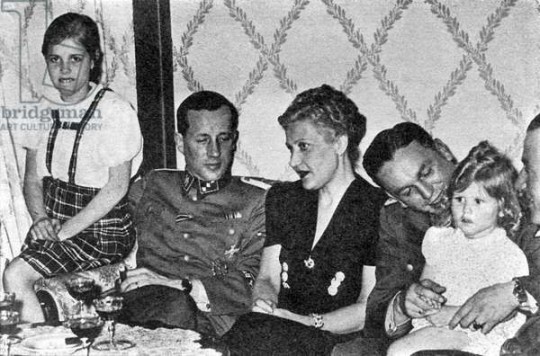
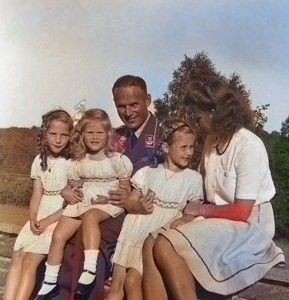
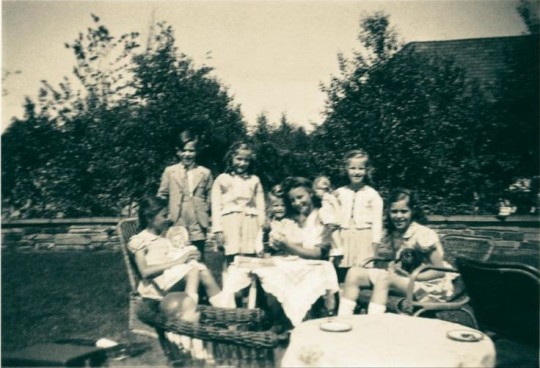

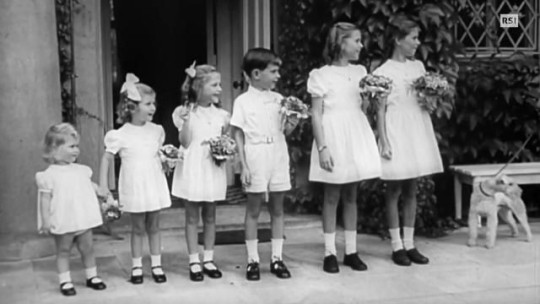
Joseph Goebbels 6 children 💐🤍
Joseph goebbels 6 children were killed by their parents on the 1st May 1945. Their mother, magda goebbels, or a member of the SS crushed cyanide casuals in their mouths. The children were unaware of what was about to happen to them. However, the oldest child Helga could sense that her parents were lying to her she also asked what would happen to them. Helga, whom Misch called the brightest of the children, was "crying softly" just before bedtime on that final night and wore a glum expression. Misch felt Helga had little fondness for her mother. Magda had to push Helga towards the stairs that led up to the Vorbunker. Unfortunately helga unlike her siblings did not die peacefully. She was fighting for her life screaming and begging not to die she had a broken jaw and bruises on her face. days later, on the 3rd of May 1945, the day after the children died Soviet troops discovered the burnt remains of Joseph and Magda goebbels then they found the children dressed in night clothes and the girls had ribbons in their hair. The children were later buried in February of 1946. However, their remains were dug up burnt and scattered into the river biederitz. In 2005, it was suggested a memorial was to be created for the 6 angels . 💐🤍🪽
They did not have to die they were offers to bring the children to safety however their parents turned all of them down. They did not want there children to live in a world without the nazis. 💐🤍🪽
Helga Susanne Goebbels - 1st September 1932 - 1st May 1945 ( aged 12 )
Hildegard Traudel Goebbels - 13th April 1934 - 1st May 1945 ( aged 11 )
Helmut Christian Goebbels - 2nd October 1935 - 1st May 1945 ( aged 9 )
Holdine Kathrin Goebbels - 19th February 1937 - 1st May 1945 ( aged 8 )
Hedwig Johanna Goebbels - 5th May 1938 - 1st May 1945 ( aged 6 )
Heidrun Elisabeth Goebbels - 29th October 1940 - 1st May 1945 ( aged 4 )
Please remember that they were all innocent children who had nothing to do with the actions of their parents 💐🤍🪽
NO HATE EDUCATION PURPOSES!!🎀🤍
#deutschland#reichblr#joseph goebbels#ww2#history#3rd reich#ww2 germany#goebbels children#magda goebbels#helga goebbels#hildegard goebbels
78 notes
·
View notes
Text
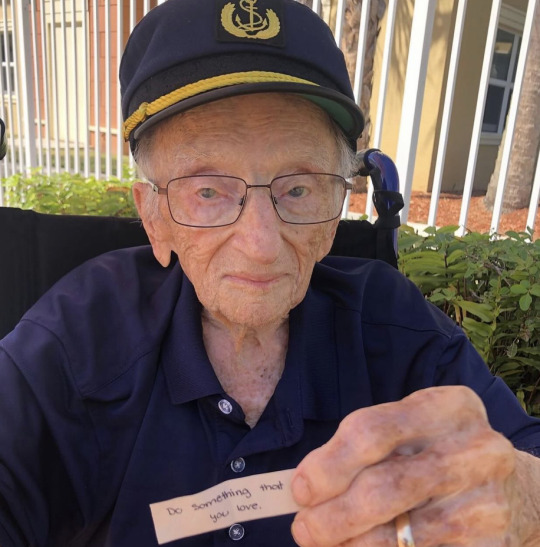
Benjamin Ferencz was born on March 11, 1920, to a Jewish family in the Carpathian Mountains of Transylvania. He was only 10 months old when his family moved to the United States and settled in the Lower East Side. In 1943, Ferencz graduated from Harvard Law School and enlisted in the U.S. Army as America was preparing to invade France. He served under General Patton and was awarded 5 battle stars. Towards the end of WWII, Ferencz was appointed as a war crimes investigator in the newly established War Crimes Branch of the U.S. Army. He gathered proof of Nazi brutality to convict individuals of international war crimes. Ferencz was a first-hand witness of the atrocities committed by the Nazis and was among the U.S. forces that liberated several concentration camps. When asked about what he had witnessed, Ferencz said, “My mind would not accept what my eyes saw. … I had peered into hell.” By the end of 1945, Ferencz returned to New York and was soon recruited by the U.S. Government to join the team for the Nuremberg Trials. At just 27 years old, Ferencz was appointed Chief Prosecutor in the Einsatzgruppen Trial, which is considered the biggest murder trial in history. Ferencz and his team were responsible for the convictions of 22 Nazi death squad commanders, guilty of genocidal war crimes and crimes against humanity and were charged with the murder of over one million people. Here is a photo from this time last year on his 103rd birthday, reminding us to “do something that you love.”
Ferencz passed away just a few weeks later on April 7, 2023. May his memory be a blessing.
humansofjudaism
87 notes
·
View notes
Text

USS Missouri (BB-63) about to be hit by a Japanese A6M "Zero" kamikaze, while operating off Okinawa on 11 April 1945
37 notes
·
View notes
Text
I don't normally add trigger warnings to my posts because talking about nazis you kind of assume there will horrible information.
This, however, is one of the worst, so TW.
Otto Moll
SS Hauptscharführer Moll held the position of SS Rapportführer a senior SS position within the SS Guard Units the "Totenkopfverbände" sanctioned within the camps.
Moll is said personally to have killed hundreds at Birkenau, and oversaw the deaths of hundreds of thousands while at the camp, such as of the Hungarian Jews in 1944. He served as the chief of the crematorium/extermination zone at Birkenau from 1943 to 1945, a role that he carried out with immense cruelty.
Moll never stood trial for what he did at Auschwitz, having left shortly before its liberation and instead surrendering to the U.S. Army at Dachau in April 1945. However, in November 1945, he was charged as a war criminal at the U.S.-run Dachau camp trial. A month later, Moll was found guilty and sentenced by hanging. He was executed in 1946.
Otto Moll has been described as "the ultimate example of the cruel 'nazi spirit'", while doctor Miklós Nyiszli described Moll as "the most insane murderer of the World War". Moll has also been described as "the sadistic and cruel executor of the 'Final Solution,' a man who was the terror of both the Jews and the SS men", and as one of the "most sadistic and evil figures in the history of Auschwitz".
Moll joined the SS-Totenkopfverbände, the SS Death's Head Units responsible for administering the Nazi concentration camps and extermination camps for Nazi Germany. One of his earliest jobs was as a Kommandoführer in charge of the camp's gardeners' work detail. In May 1941, Moll was transferred from the Sachsenhausen concentration camp to Auschwitz where he was put in charge of digging mass graves. Over the next three and half years, Moll served in several staff roles at the camp. He soon became the director of employment services at the men's camp in Auschwitz II (Birkenau). In 1944, Moll oversaw all the crematoria in Birkenau. He also was a Lagerführer of the Auschwitz sub-camps of Fürstengrube in Wesola and Gleiwitz I. According to Auschwitz commandant Rudolf Höss, he and Moll were both decorated by Adolf Hitler with the War Merit Cross, First Class with Swords. He appears several times in the photo album belonging to Auschwitz commandant Karl-Friedrich Höcker that showed SS camp staff on leave at the retreat called Solahütte. From 11 to 25 September 1943, the wife of one of Otto Moll's friends, Hans Anhalt stayed at a garrison near Auschwitz with his permission.
Moll would say to his personnel: "Befehl ist Befehl!" ("An order is an order!") to justify his actions. This was an attitude that other defendants at the Nuremberg Trials also cited as a defence.
In 1944, after realizing that the crematoria were not sufficient to burn the number of Jewish people arriving at the camp, Moll forced prisoners to dig large open-air pits to incinerate excess bodies. He also reopened a farmhouse which had been previously used as a makeshift gas chamber.
Alter Feinsilber, a member of the Sonderkommando at Birkenau who worked for Moll, later recounted:
"At that time, on average around 18,000 Hungarians were murdered daily at Birkenau. Transports would come from dawn till dusk, one after another, and around 20% of those arriving were sent to the camp. They were recorded in series A and B. The rest were gassed and incinerated in the crematorium furnaces. In cases where there were not enough prisoners, they were executed by shooting and burned in pits. As a rule, a gas chamber was only utilized for groups bigger than 200 people because it was uneconomical to use it for smaller groups. It sometimes happened that during executions by shooting some prisoners put up a fight or children cried, and then Oberscharführer Moll would throw these people into the burning pits alive. I personally witnessed the following scenes. Moll ordered a naked woman to sit on the corpses near a pit, while he shot at prisoners and threw them to the burning pit, ordering the woman to jump and sing. Of course she did so, in hopes of saving her life. After executing everybody, Moll shot this woman and she was then incinerated. On another occasion, Moll found a few rings and a watch on a boy from our group. He halted him at the crematory, had him thrown into a furnace, started a fire using paper, and then they got him out, hanged him by his arms, tortured and interrogated him to find out where he had gotten the items found on him. Of course, he told them everything, identified the prisoner who had given these items to him, and then he was set on fire from the waist down and was ordered to run toward the wires, where he was executed."
In the book We Wept Without Tears, which features testimony from camp survivors, including many who describe Moll, survivor Shlomo Dragon said "Once we found a baby who'd been stuffed into a pillow and was still alive. The baby's head was also buried in the pillow. After we removed the pillow, the baby opened his eyes. Meaning he was still alive. We took the bundle to Moll and told him he was alive. Moll took the kid to the edge of the pit, put him on the ground, stepped on his neck, and threw him into the fire." Another former prisoner said, "Moll...was so zealous and crazy that he personally took part in the cremations. Once he was overheard saying that if Eichmann ordered him to cremate his family, he'd do it. Moll revealed his sadism at times when he circulated among mothers who were about to be gassed and chatted with a boy whom they carried. He did it with a chuckle. He'd hug the boy, give him some candy, and try to talk the mother into handing the boy over. Then he'd take the kid to the pit and throw him into the fire alive." Other times, Moll would lure the child way entirely on his own.
Moll would also place naked women at the edge of the pits, shoot them in the stomach so they would fall over, and watch them burn to death, beat people with clubs and iron bars, douse people with petrol and set them on fire, set dogs on them, throw them against electric fences, and smash children into concrete walls in front of their mothers.
In November 1945, Moll was put on trial by an American military court during the Dachau trials. He was only tried for what he did at Dachau. Moll was sentenced to death after being found guilty of fatally shooting prisoners who had collapsed from exhaustion. According to Kapo Wilhelm Metzler, Moll had shot 26 people. After Moll's conviction, Major Draper, a British military prosecutor, sent an urgent request for an interview to the commandant of Landsberg Prison, where Moll was awaiting execution. He requested an interview with him, saying the world needed to know what he had done in Auschwitz. It is not known whether the interview ever took place. However, Moll was interviewed during the Nuremberg trials. Unlike his superior Rudolf Höss, he largely denied involvement in the killing of Jews at Auschwitz. After his case was reviewed, a panel recommended that Moll's sentence be carried out. He was executed by hanging at Landsberg Prison on 28 May 1946.
"One of the most sadistic figures of Auschwitz." Think of how terrible people were at Auschwitz. Mengele, Heß, etc.

12 notes
·
View notes
Text
MCU Timeline. Spider-Man: Homecoming. Part 1
I'm going to do "The best/worst timelines" post after I'm done with the Infinity Saga, and this movie is probably going to be the worst. It's that bad. In the Official Timeline book, Marvel had to give TVA notes to some of their projects, addressing the mistakes they made. This is the only movie that got more than one. It got FOUR. And Marvel missed a lot, I say. There was no quality control during the production of this film, it seems.
There are so many time references and f*ck ups that I had to make 3 parts for this timeline.
April 15, 1984 - Aaron Davis is born.
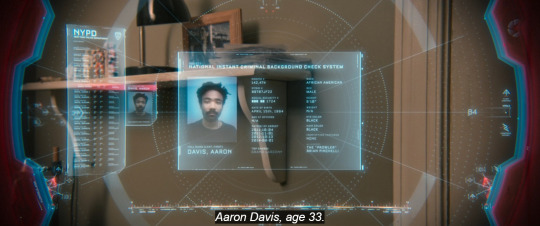
F*ck up #1: he turns 33 in April 2017. It is now fall 2016.
August 10, 2001 - Peter Parker is born.
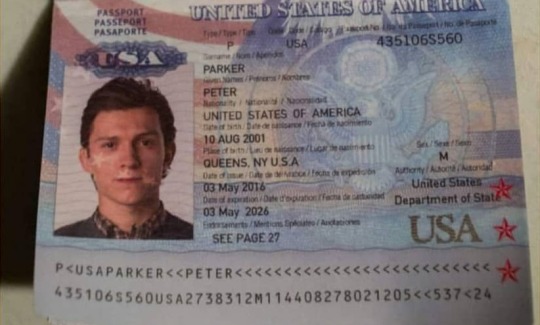
September 2007 - at the age of 6, Peter Parker goes to school.
2008 - Tony buys an engagement ring for Pepper and gives it to Happy for safekeeping.
2008 - October 2016 - Happy carries the ring with him.

October 4, 2011 - Aaron Davis' first arrest.
November 1, 2011 - Aaron Davis' second arrest.
May 4, 2012 - the Battle of New York.
Shortly after May 4, 2012 - Adrian Toomes receives a contract from the City of New York to clean up debris from the Battle of New York. He buys the necessary equipment and hires a team.
Second half of May 2012:
Following incidents of civilians appropriating alien weapons and technology and committing crimes with them ("Item 47" one-shot), the federal government restricts private contractors' access to clean up the aftermath of the Battle. Together with Tony Stark, they form the Department of Damage Control.
Afternoon - while clearing out Grand Central Terminal, Toomes and his team are visited by the head of the DoDC, who informs him that he is no longer authorized to do the job.

6 pm - left with some of the collected alien technology, Adrian Toomes opens his own arms smuggling business.

2012 - Steve Rogers is hired to create a series of educational videos for schools.

F*ck up #2: he was frozen from early 1945 to early 2012, that is, 67 years, not 65. We shouldn't be surprised at this point, as his testimony on this matter changes in each film.
October 13, 2012 - Aaron Davis' third arrest.
Between May 2012 and October 2016:
Toomes's team creates the Vulture's Exo-Suit for him.
He becomes a millionaire by stealing from the DoDC, creating weapons from the stolen tech, and selling them to criminals.
April 2014 - Forever - DoDC clears out the Triskelion after the events of CA:TWS. As of October 2016 they still haven't finished (deleted scene, 7:20).
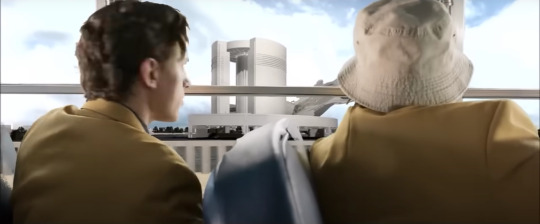
August 1, 2014 - Aaron Davis' fourth arrest.
Fall 2015 - Peter competes in the US Academic Decathlon for the first time (from the deleted scene at 5:30).
The main events of the film take place in 2016. The beginning is in early May, but most of it takes place in October.
Here we are. The most notable timeline f*ck up (#3 for us) Marvel has ever made:


8 years after 2012 would be 2020, but in this movie we are in 2016.
In this film, it is not decided at all what year and month it takes place in. I will elaborate on this in the relevant scenes.
May 3 (Friday), 2016, evening in NY:
Happy drives Peter to JFK Airport and Peter begins filming his trip.
They board Tony's private jet and head to Germany.
May 4 (Saturday), 2016 (time in Germany):
~8 am - the jet arrives in Berlin.
~9 am - Peter and Happy arrive at a hotel in central Berlin, and Peter receives a new suit from Tony that he made for him.
They head to Leipzig/Halle airport.
~11 am - the Battle at Leipzig-Halle Airport.
Tony sends Peter home after Parker sustained minor injuries (according to CW).
Evening - Peter is back at the Berlin hotel with Happy.
Night - (according to the deleted scene at 4:10) he leaves the hotel and spends the night partying in the city.

TVA ALERT: the sequence of scenes from that hotel scene to the scene where Peter returns to his apartment is incompatible with Civil War. Here's a post about it. Yes, I warned you that this movie is a disaster. Here I will describe events only according to SMH, and not to CW.
May 5 (Sunday), 2016:
Morning (Berlin) - during breakfast, unhappy Happy shows Peter a newspaper with Spider-Man's nightly adventures.
Night (NYC) - Tony and Happy drive Peter home. Tony appoints Happy as Peter's supervisor.
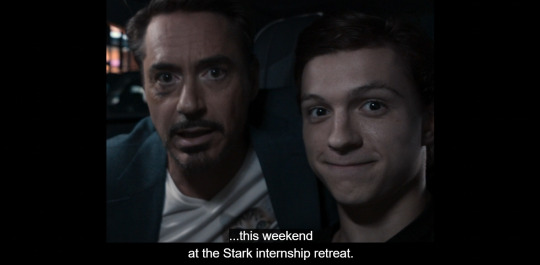
Note: The movie calendar is also incompatible with CW and real world calendar. We have to add 3 days to the real weekdays to get the day of the week in Homecoming (ex: our Tuesday is SMH's Friday). See CW Timeline.
Between June and October 2016 - Pepper returns to Tony.
August 10, 2016 - Peter turns 15 years old.

Summer 2016 - Flash's father buys a new Audi TTS 2017.

Note: some people think this is proof that the movie is set in 2017, but the model was already available for purchase in the summer of 2016. This is common. The same thing happened with Tony's Audi R8 from Iron Man.
First week of September 2016:
Peter quits the robotics lab.
He then also quits the marching band to have more time to patrol, and sends a message to Happy about it. Happy tells Tony.

May-October 2016:
Remodeling of the Avengers Compound.

Tony works on Iron Spider suit for Peter.
~September 2016 - Tony sells Avengers Tower. Happy is assigned to supervise the process of moving into the Compound.
Part 2, Part 3
MCU Timelines: Phases One and Two MCU Timeline: Black Widow MCU Timeline. Captain America: Civil War MCU Timeline: Doctor Strange MCU Timeline: GotG 2 MCU Timeline: Captain Marvel MCU Timeline: Black Panther
#marvel#mcu#spider man homecoming#peter parker#spider man#tony stark#iron man#happy hogan#adrian toomes#mcu timeline#captain america civil war
12 notes
·
View notes
Text
A US Navy captain ordered a military funeral for a kamikaze pilot during WWII. Here’s why
by AUDREY McAVOY and MARI YAMAGUCHI • 12 April 2025

This image provided by the U.S. National Archives shows a scan of a photo of a Japanese Zero fighter plane hitting the USS Missouri in waters off Okinawa, Japan on April 11, 1945. (U.S. National Archives photo no. 80-G-315811A via AP)
PEARL HARBOR, Hawaii (AP) — A Japanese pilot slammed his Zero fighter plane into the USS Missouri and ignited a fireball on April 11, 1945, during the Battle of Okinawa. The suicide attack instantly killed the pilot, but none of the battleship’s crew members were badly hurt.
The Missouri’s captain ordered a military burial at sea with full honors, marking one of the more unusual and little-known episodes of World War II. The pilot received the same funeral that the ship would have given one of its own sailors.
Eighty years later, the Missouri is a museum moored at Pearl Harbor, Hawaii, not far from the submerged hull of the USS Arizona, which sank in the 1941 Japanese bombing that propelled the U.S. into the war.
The museum hosted a ceremony Friday marking the anniversary of the attack and burial with three of the captain’s grandsons and the mayors of Honolulu and the Japanese city of Minamikyushu, from which many kamikaze pilots set off on their suicide missions.
“This is one of the ship’s great stories and explains, in part, why the ship became an international symbol of peace and reconciliation within two years of its launching and rather than just an instrument of destruction,” said Michael Carr, CEO of the Battleship Missouri Memorial. “This is a remarkable story of compassion and humanity, even in the midst of one of the worst battles of World War II.”
A Japanese Zero fighter plane hits the USS Missouri in waters off Okinawa, Japan, on April 11, 1945. (U.S. National Archives)
Here is what to know about the attack on the Missouri and the pilot’s burial:
What is a kamikaze pilot?
Japan launched a suicide attack campaign as a last-ditch measure to push U.S. forces back late in the war, when it was hopelessly losing.
The Imperial Navy founded the Kamikaze Tokko Tai, which translates as Divine Wind Special Attack Corps, and the Imperial Army followed with its own unit. Internationally their missions are called kamikaze, but in Japan they are better known as “tokko,” which means “special attack.”
The pilots flew hastily constructed planes and even reconnaissance and training aircraft because the military lacked sufficient equipment. They took off on one-way flights with just enough fuel to reach their targets.
Kamikaze sank their first ship on Oct. 25, 1944, when a navy Zero pilot smashed into the USS St. Lo in the Philippine Sea while carrying a pair of 550-pound (250-kilogram) bombs. Britain’s Imperial War Museum says they killed 7,000 Allied naval personnel in all.
Their initial 30% success rate fell to about 8% by mid-1945 due to declining crew skills, dwindling aircraft capabilities and improved U.S. defenses.
Some 4,000 pilots died on suicide missions, about 2,500 navy and more than 1,400 army, most of them university students drafted in late 1943. Many launched from Chiran, a tea farming town that today is part of Minamikyushu, a city in southwest Japan.
The missions became more intense as Japan’s outlook grew more dire and the military showcased the sacrifice of the pilots to drum up patriotism and support for the war. Those who failed to take off or survived were considered a disgrace.
Despite stereotypes of kamikaze as super-patriots who volunteered to die, many were not, as shown by their carefully nuanced last letters to loved ones and survivor accounts.
“They were victims of war,” said Hiroyuki Nuriki, mayor of Minamikyushu, who noted the pilots were only around 20 years old and had futures.
“I’m sure they didn’t want to die, but they still had to go,” he said. “That’s the tragedy of war, and that’s why we should never start a war again.”
What happened when the plane hit the Missouri?

Anti-aircraft fire peppers the sky and sea as a Japanese Zero fighter plane heads towards the USS Missouri that was operating off Okinawa, Japan, on April 11, 1945. (U.S. National Archives photo no. 80-G-315812 via AP)
The Missouri’s gunners hit the Zero fighter with a 5-inch (12.7-centimeter) round. The plane plunged, but it leveled out about 20 feet (6 meters) above the ocean and headed for the ship’s starboard side.
The crash ripped off the plane’s right wing, which landed on the deck. Fuel in the wing caught fire, unleashing a giant plume of smoke. The crew controlled the fire within five minutes.

This April 3, 2025, photo taken at the Battleship Missouri Memorial in Pearl Harbor, Hawaii shows damage sustained when a Japanese Zero fighter flown by a kamikaze pilot rammed into the USS Missouri during the Battle of Okinawa on April 11, 1945. (AP Photo/Audrey McAvoy)
What happened to the pilot?
Capt. William Callaghan ordered the funeral to be held the next morning.
The crew collected red and white cloth and sewed a makeshift “rising sun” flag so he could be buried under his own colors, said Frank Clay, curator of the Battleship Missouri Memorial. They cleaned the body, wrapped it in canvas and placed it on a tray against the rail beneath the flag.
Marine rifle guards gave a gun salute and a bugler played taps. The chaplain gave an invocation and said, “Commit his body to the deep.” The crew tipped the tray and the body slid into the sea.

U.S. service members prepare a burial at sea for the remains of a Japanese pilot whose plane hit the USS Missouri on April 11, 1945. (U.S. National Archives photo no. 80-G-315823 via AP)
Some crew members resented the ritual, while others grumbled but later came to believe it was the right thing to do, Clay said.
Ed Buffman, who was a teenage gunner’s mate 2nd class on the Missouri, said he did not dwell on it: “The next day you’re ready to go back and battle again.”
Little is known of Callaghan’s reasons for ordering the ceremony, which appeared on the ship’s daily schedule for meal times and other routine activity.
Carey Callaghan said his grandfather never spoke of the burial and his family didn’t learn about it until 2001. He said his grandfather had empathy and a sense of dignity, which was reflected by the funeral.
A remarkable thing, Callaghan said, was that three years earlier, his grandfather lost his brother, Rear Adm. Daniel Callaghan, to Japanese gunfire off Guadalcanal.
What is known about the pilot?
Scholars believe he was Setsuo Ishino, a petty officer 2nd class in a flight training program.
The pilot took off from Kanoya air base in southern Japan with 15 others as part of the No. 5 Kenmu Squadron. Most failed to hit their targets and crashed into the ocean.

This April 3, 2025, photo taken at the Battleship Missouri Memorial in Pearl Harbor, Hawaii, shows fragments of the Japanese Zero fighter that a kamikaze pilot flew into the side of the USS Missouri during the Battle of Okinawa on April 11, 1945. (AP Photo/Audrey McAvoy)

A fragment of a silk scarf and a button worn by the kamikaze pilot of a Japanese zero plane that rammed into the USS Missouri during the Battle of Okinawa is on display at the Battleship Missouri Memorial in Pearl Harbor on April 3, 2025. (AP Photo/Audrey McAvoy)
Why is the anniversary being remembered decades later?
Then-President Barack Obama referenced the burial in 2016 when he visited Pearl Harbor with then-Prime Minister Shinzo Abe. He told those gathered that Callaghan showed “we must resist the urge to demonize those who are different” and do so “even when hatred burns hottest.”
Thanks to Callaghan’s act, the Missouri museum and the Chiran Peace Museum, which displays army tokko artifacts, today are partners and help each other with exhibits.
Nuriki, the Minamikyushu mayor, said it is important to remember the events of April 11, 1945, and the tragedy of kamikaze pilots as Asia-Pacific tensions rise.
“We share the history between the former enemies that have become friends,” he said. “We should keep telling the story and think about peace.” ■
#pearl harbor#ww2#ww2 aviation#ww2 history#Setsuo Ishino#William Callaghan#pacific theater#uss missouri#battle of okinawa#battleship missouri#idk i just loved this story and wanted you to be able to read it
7 notes
·
View notes